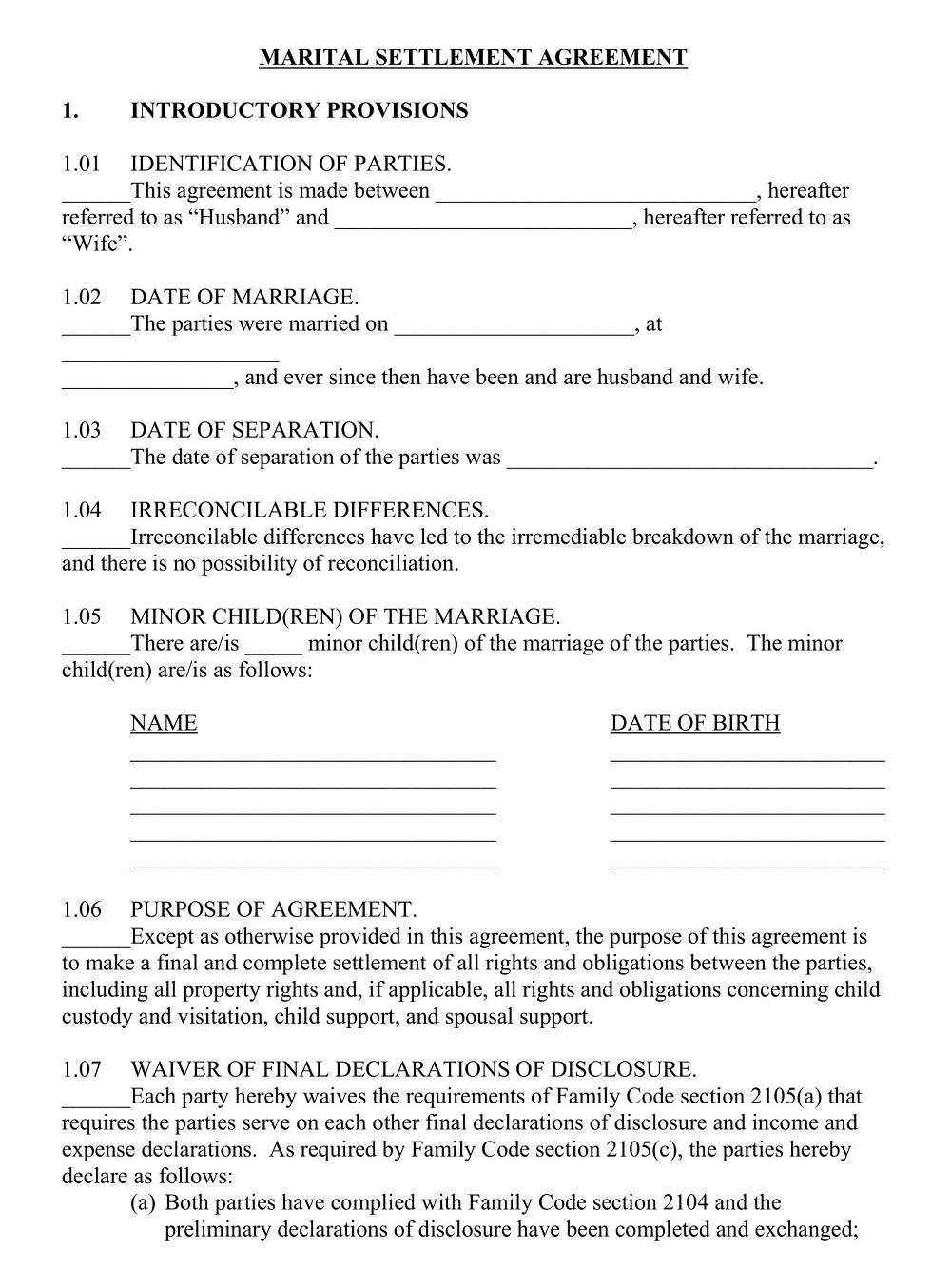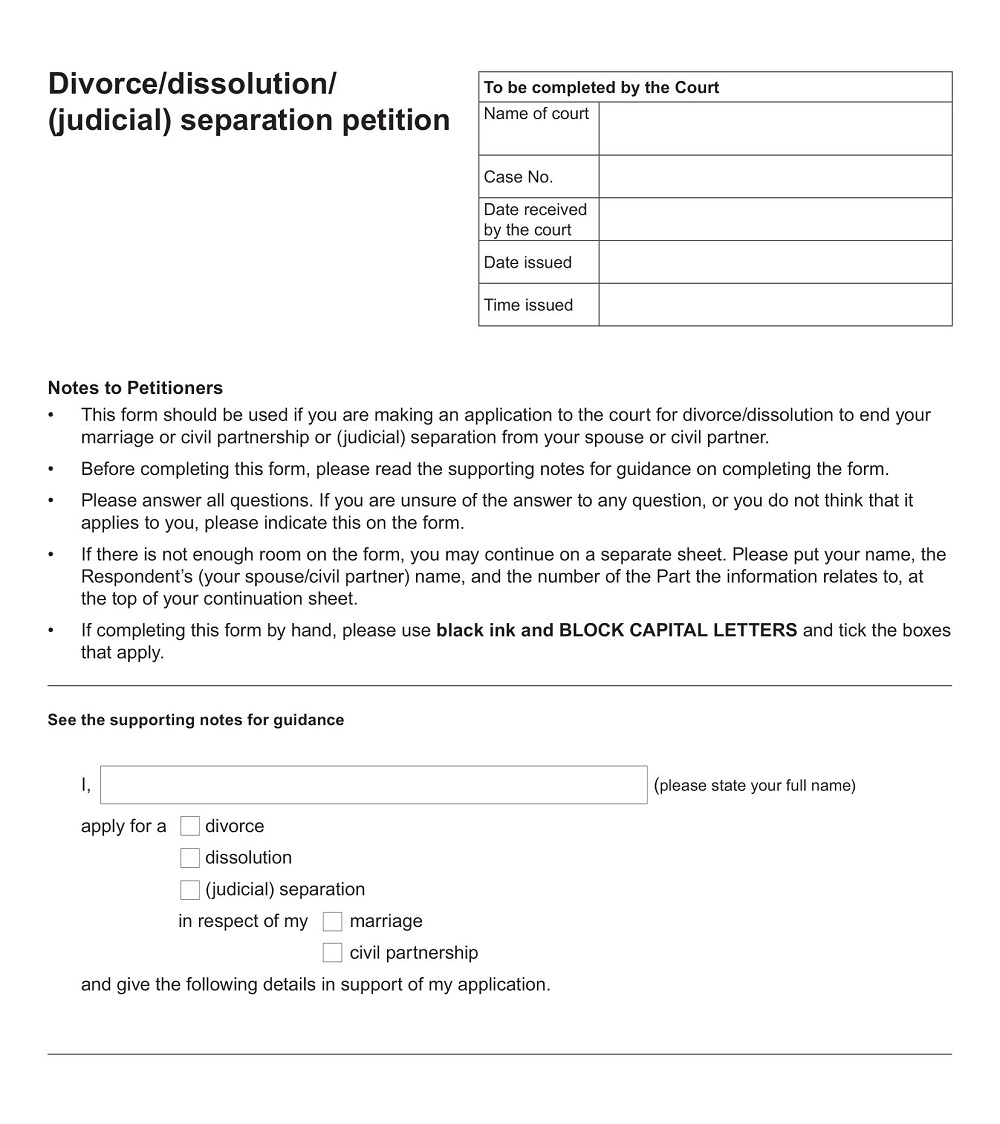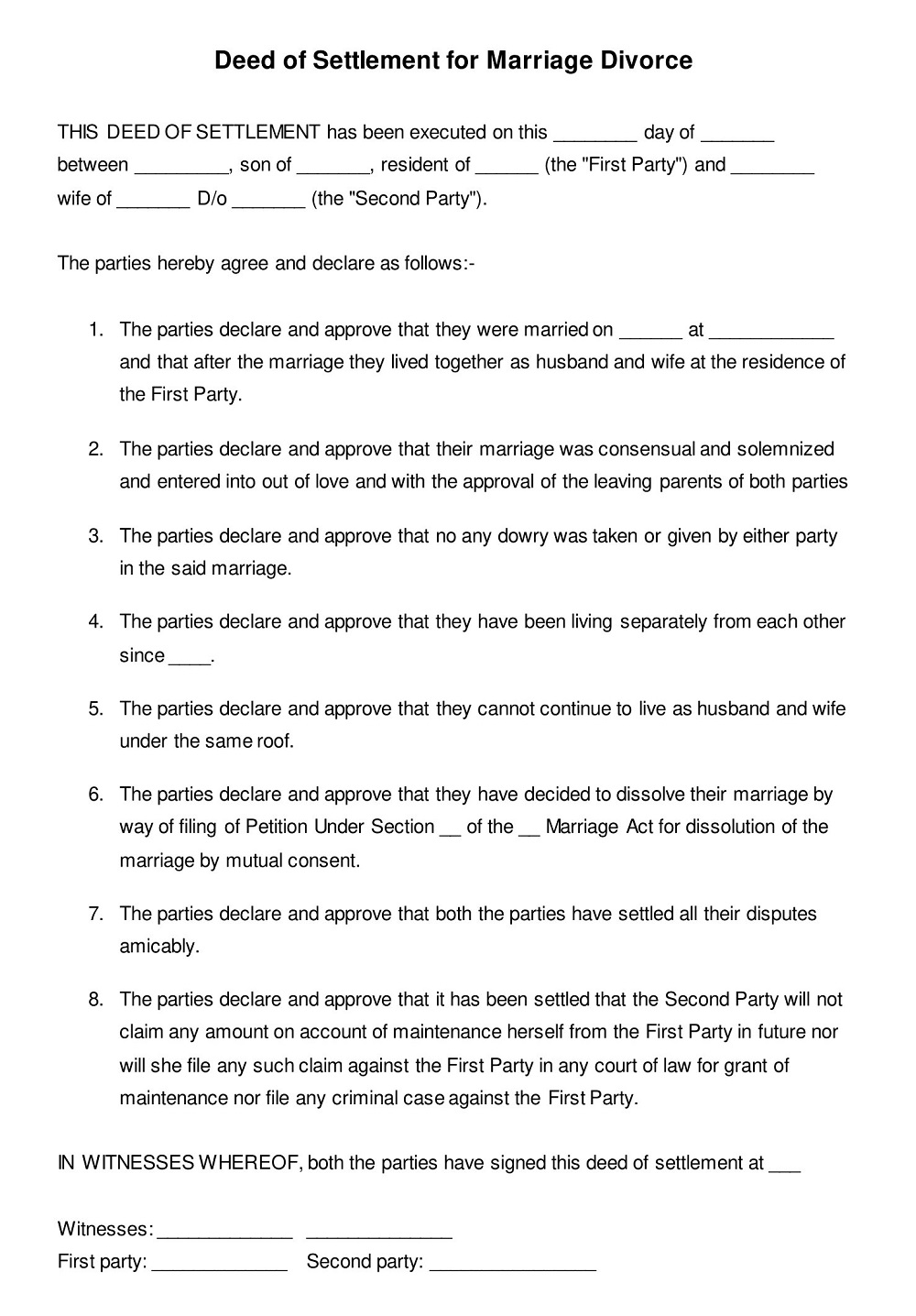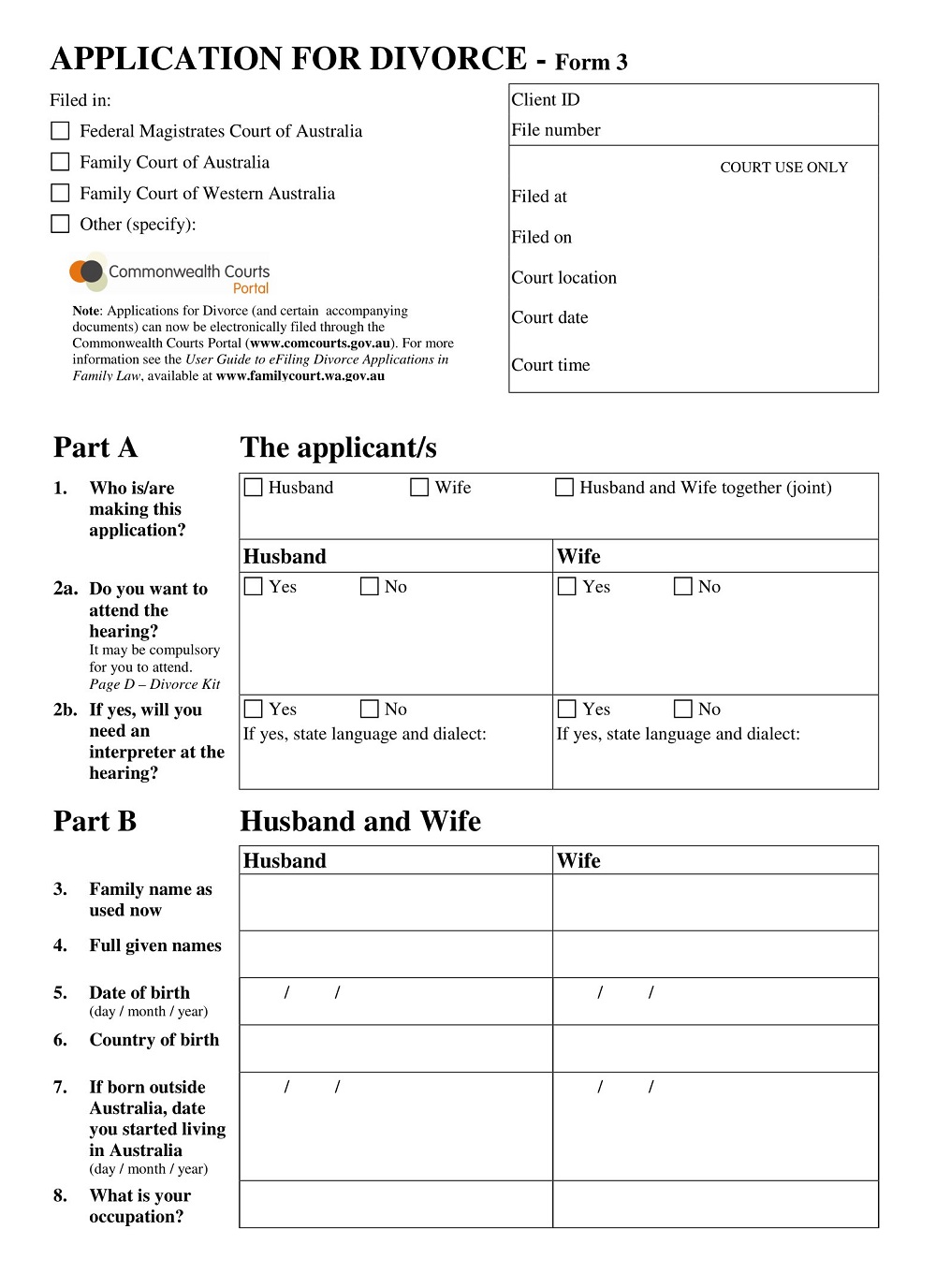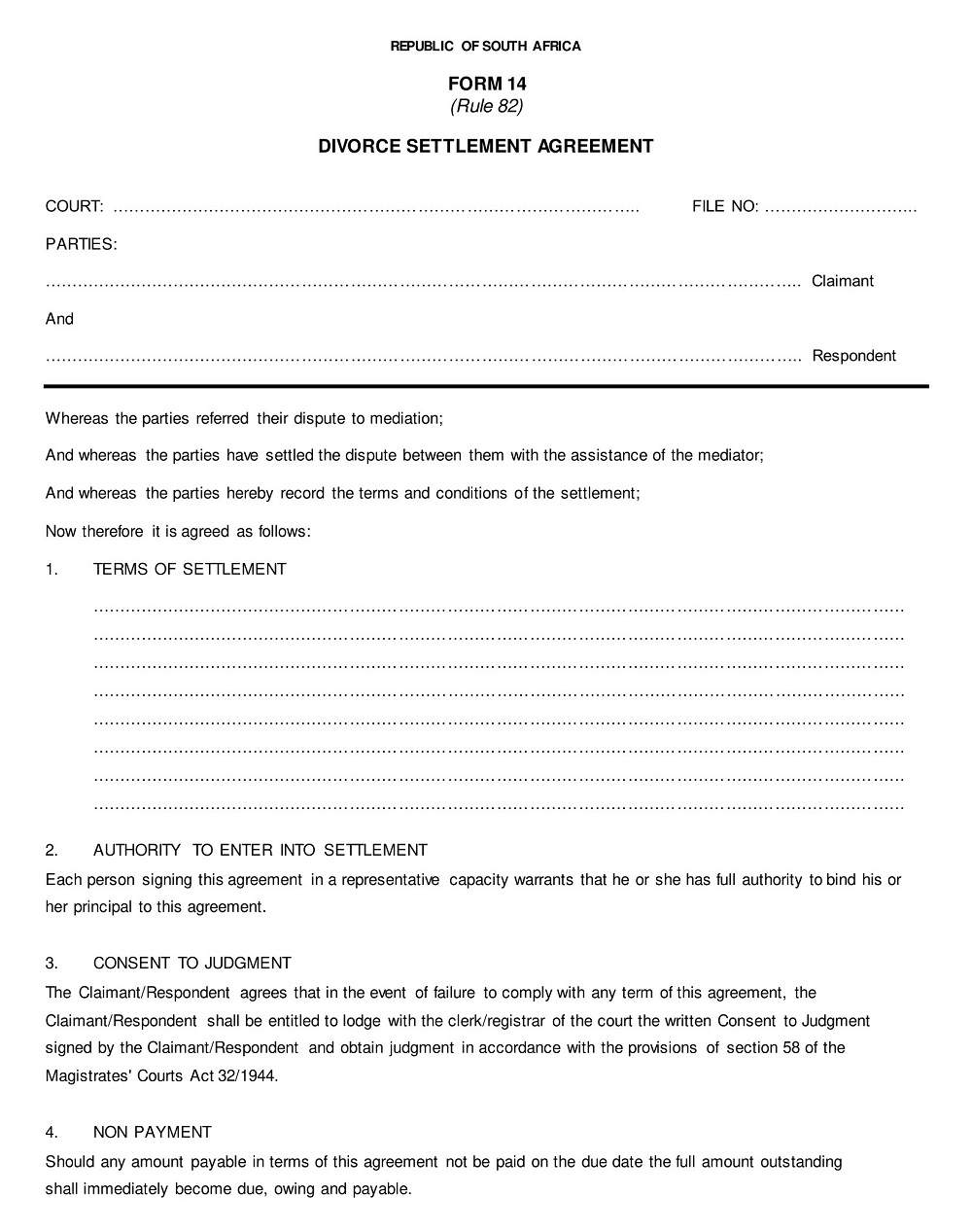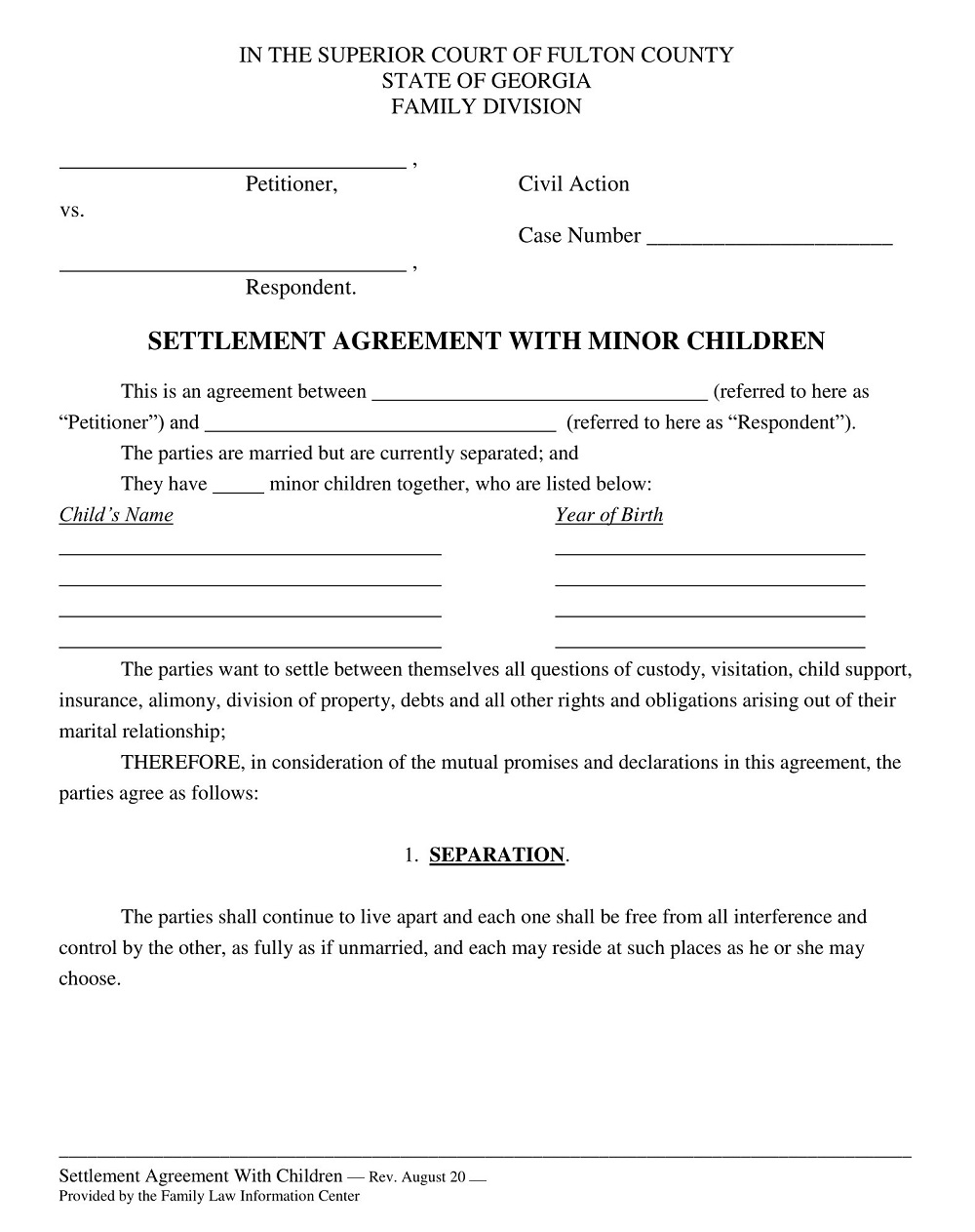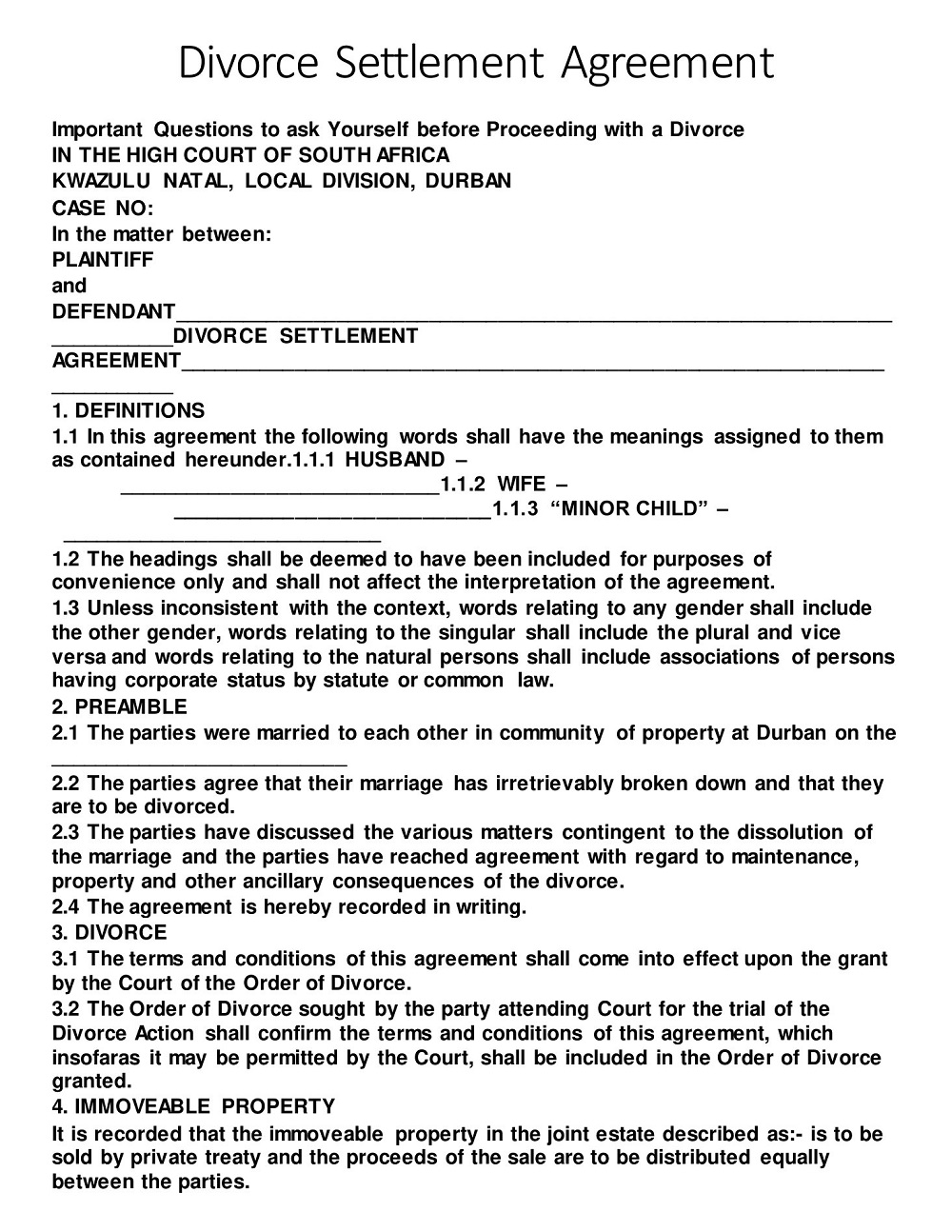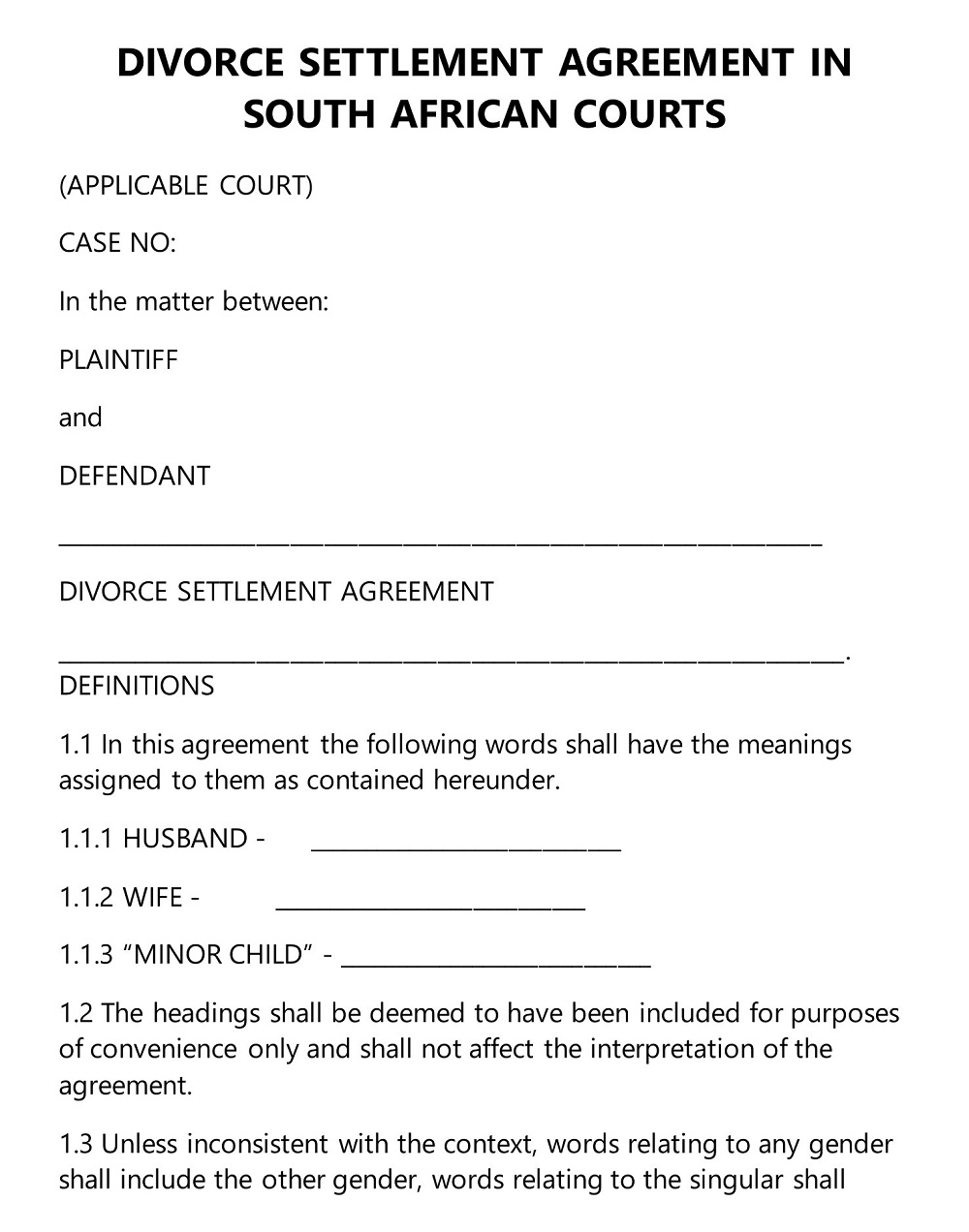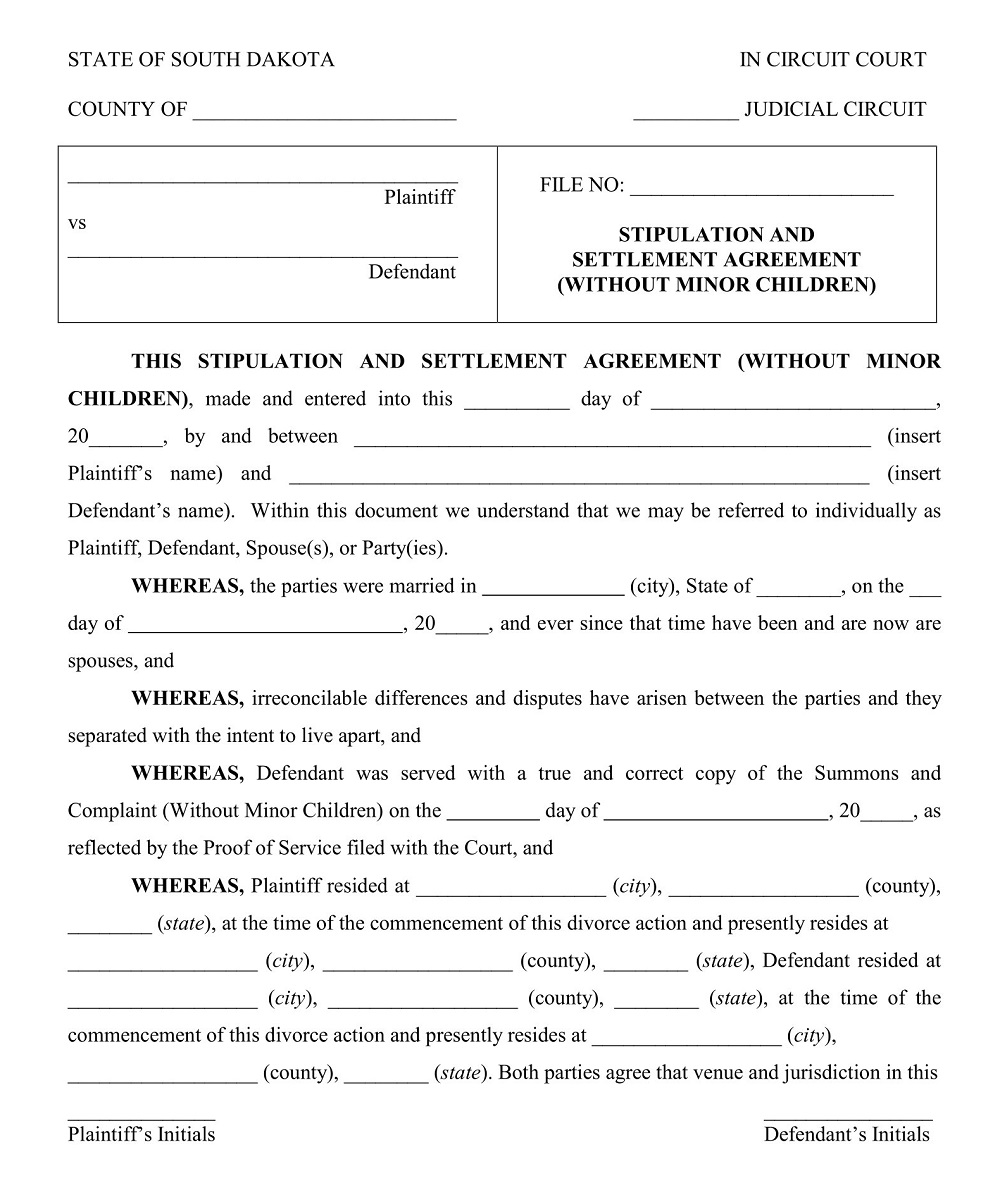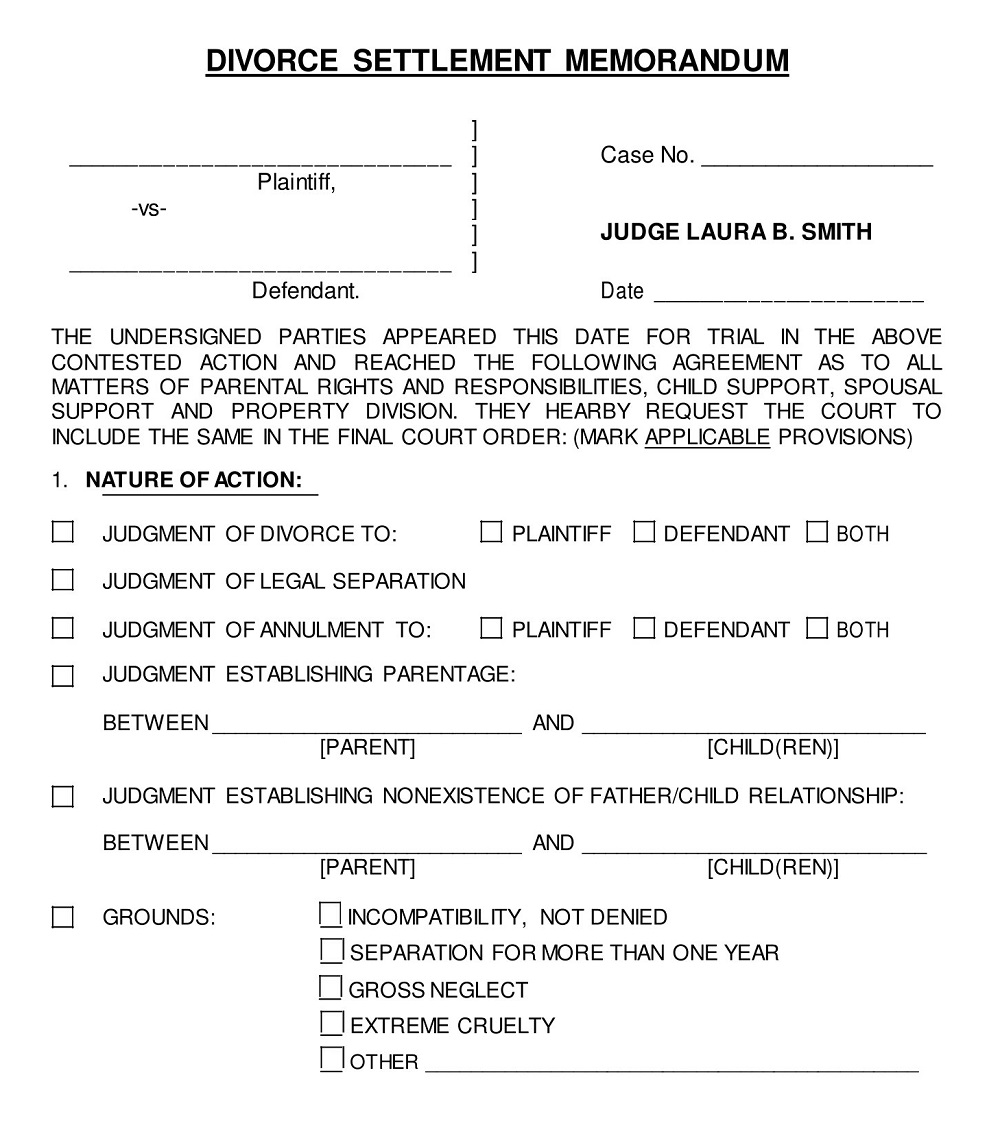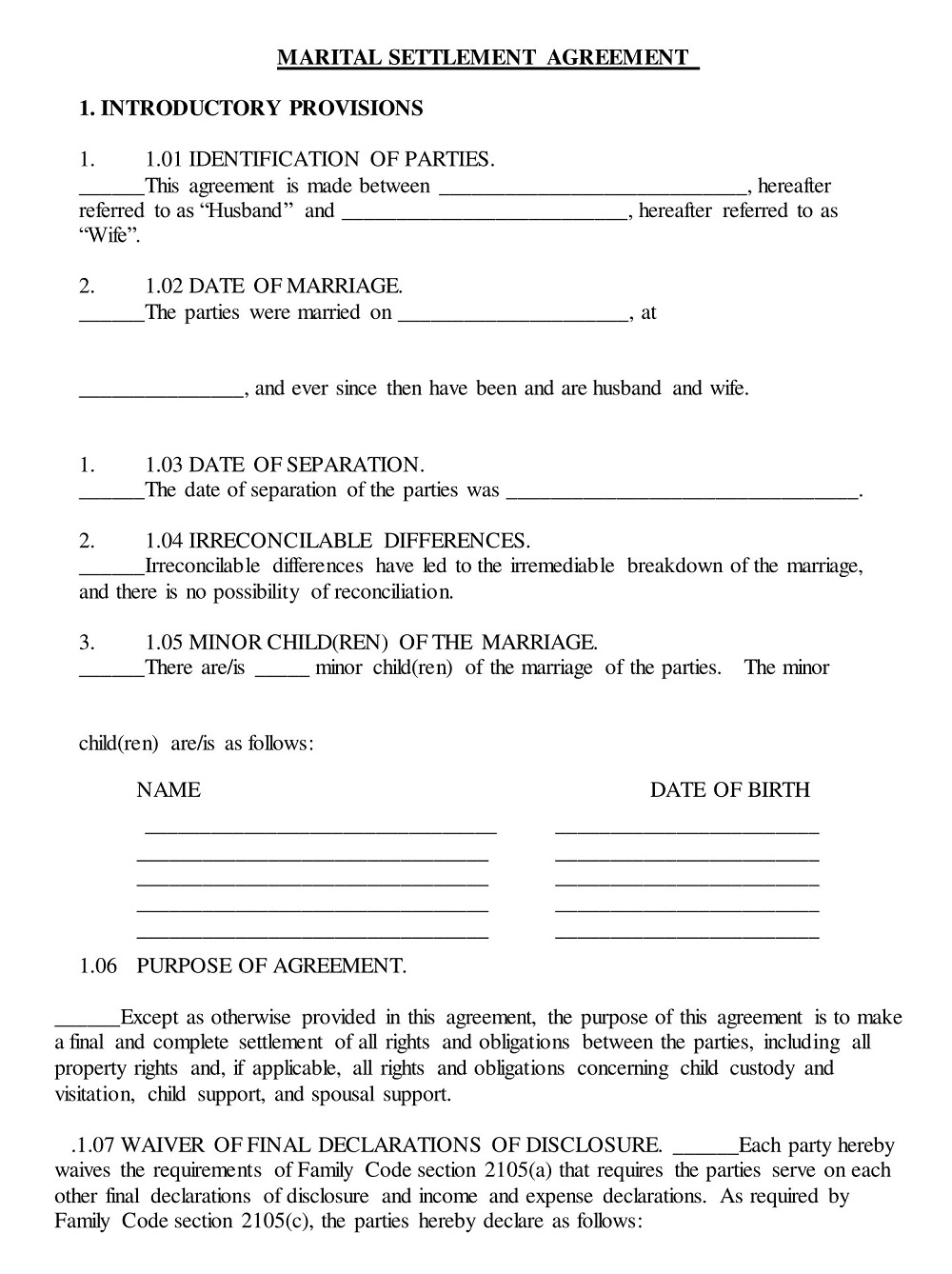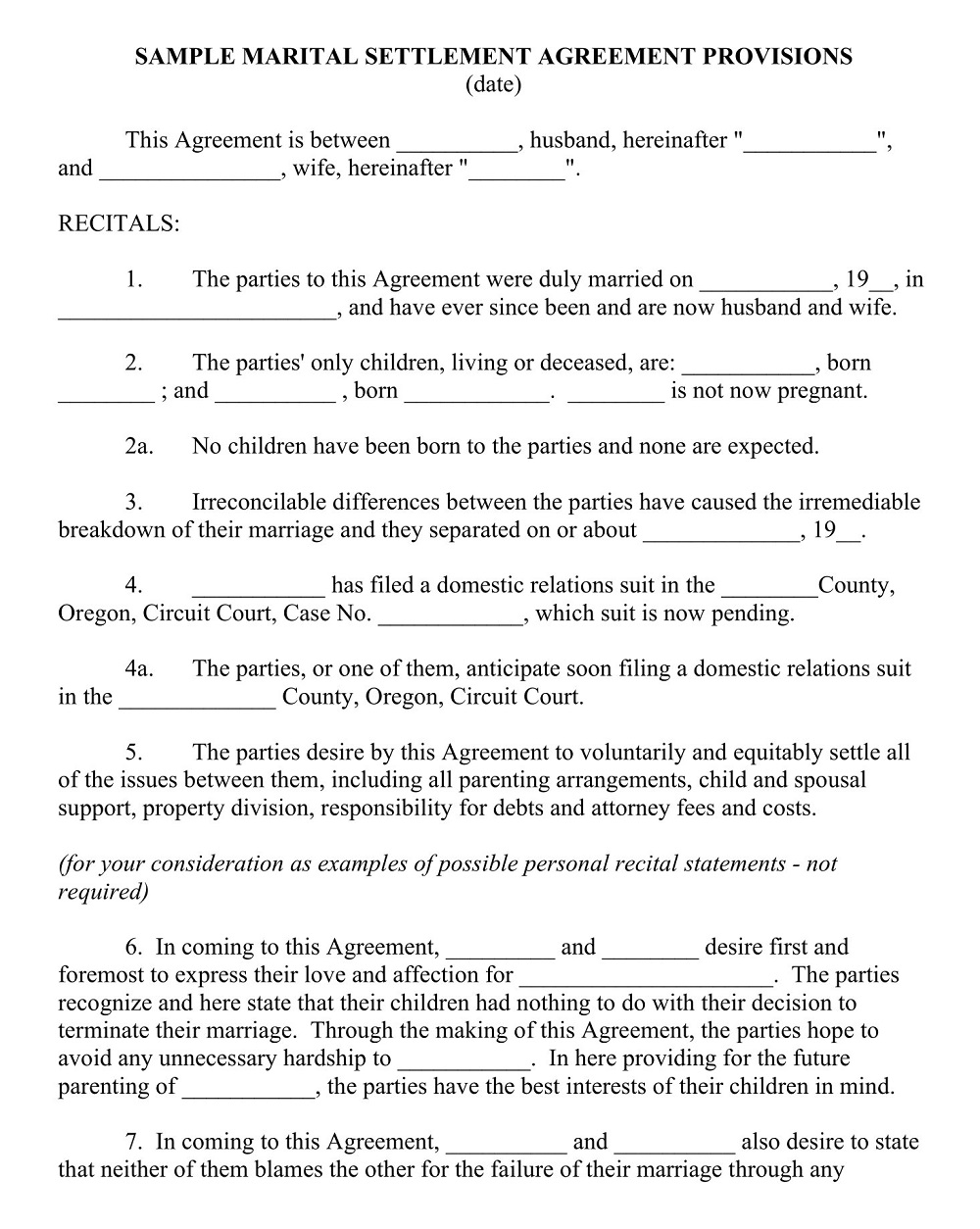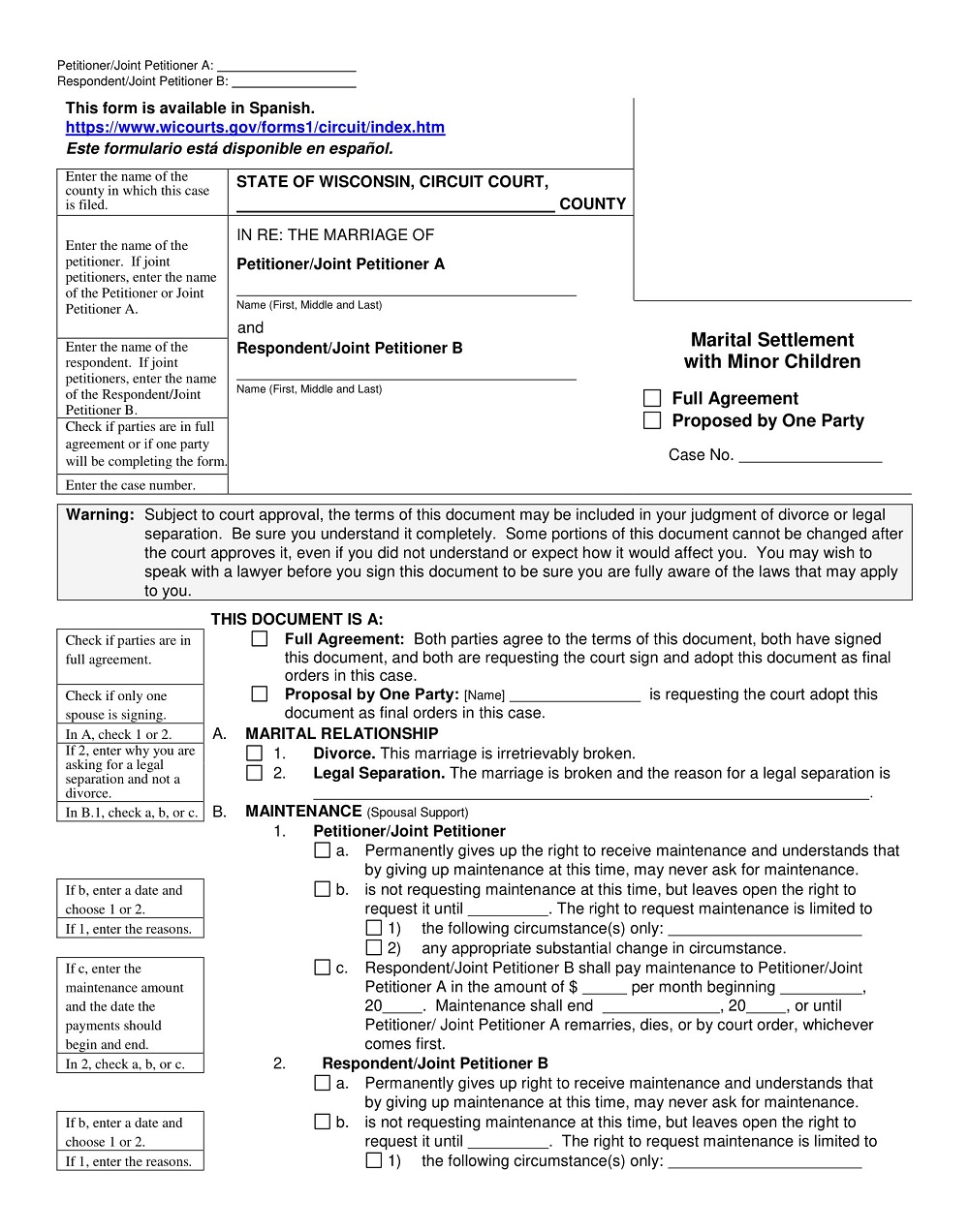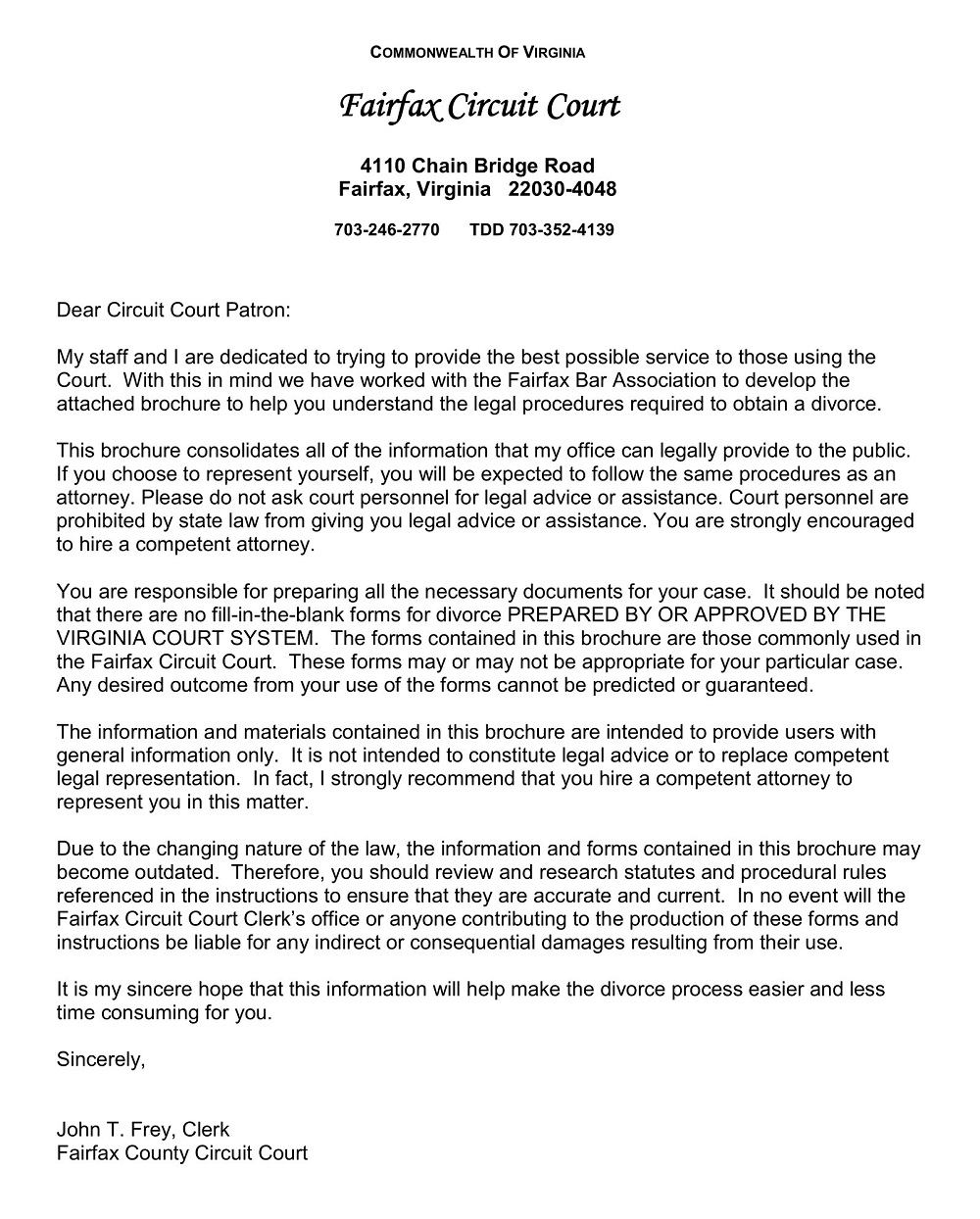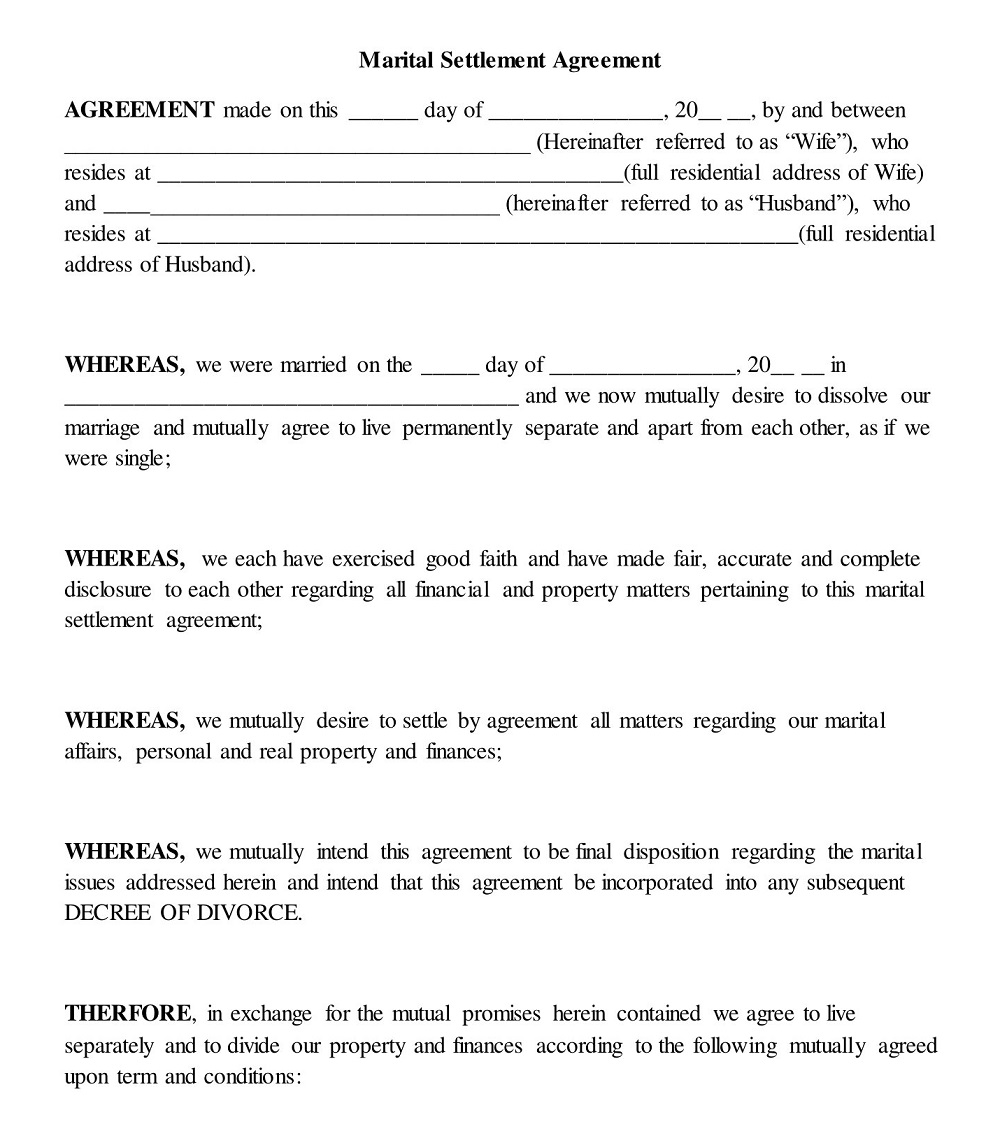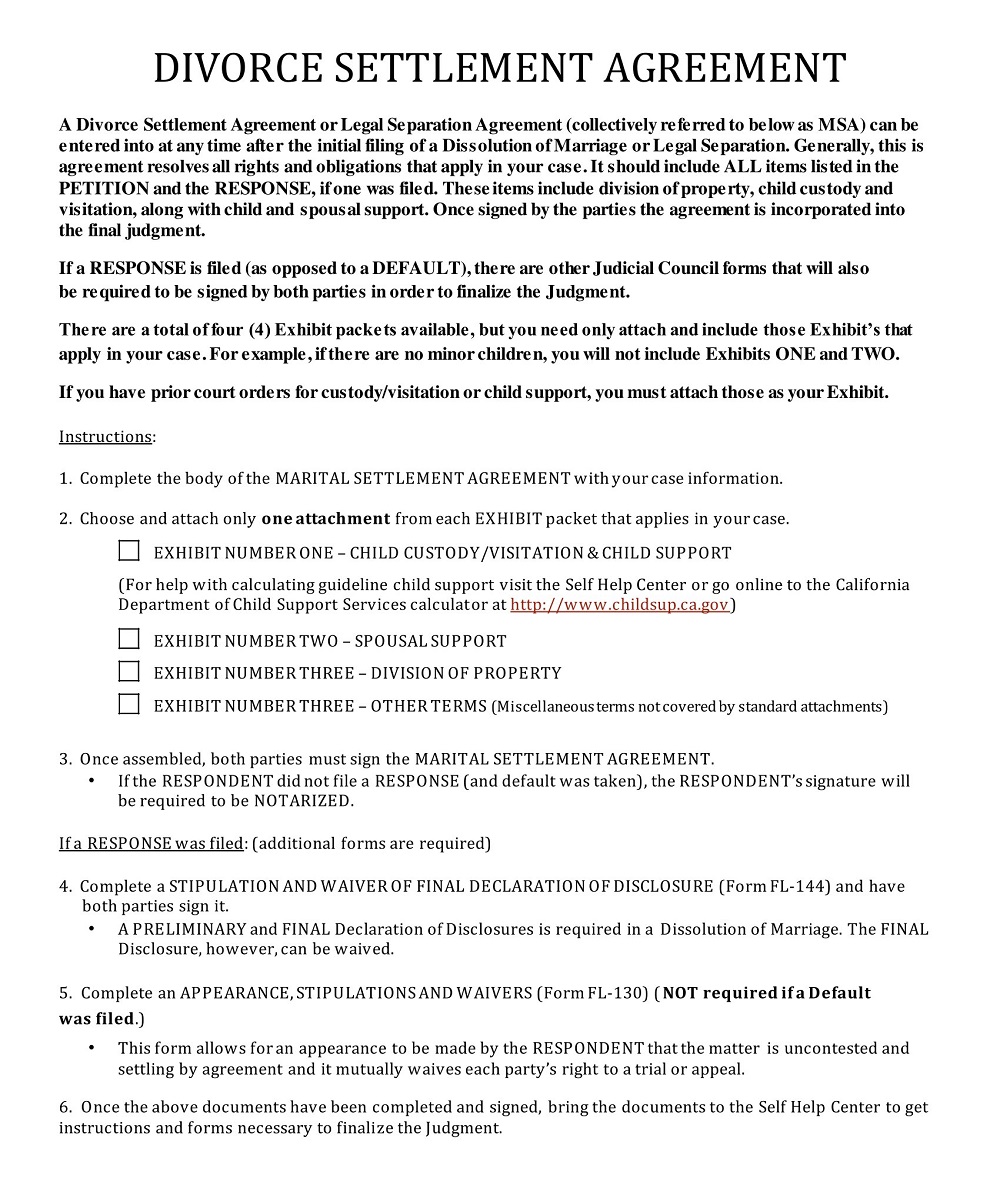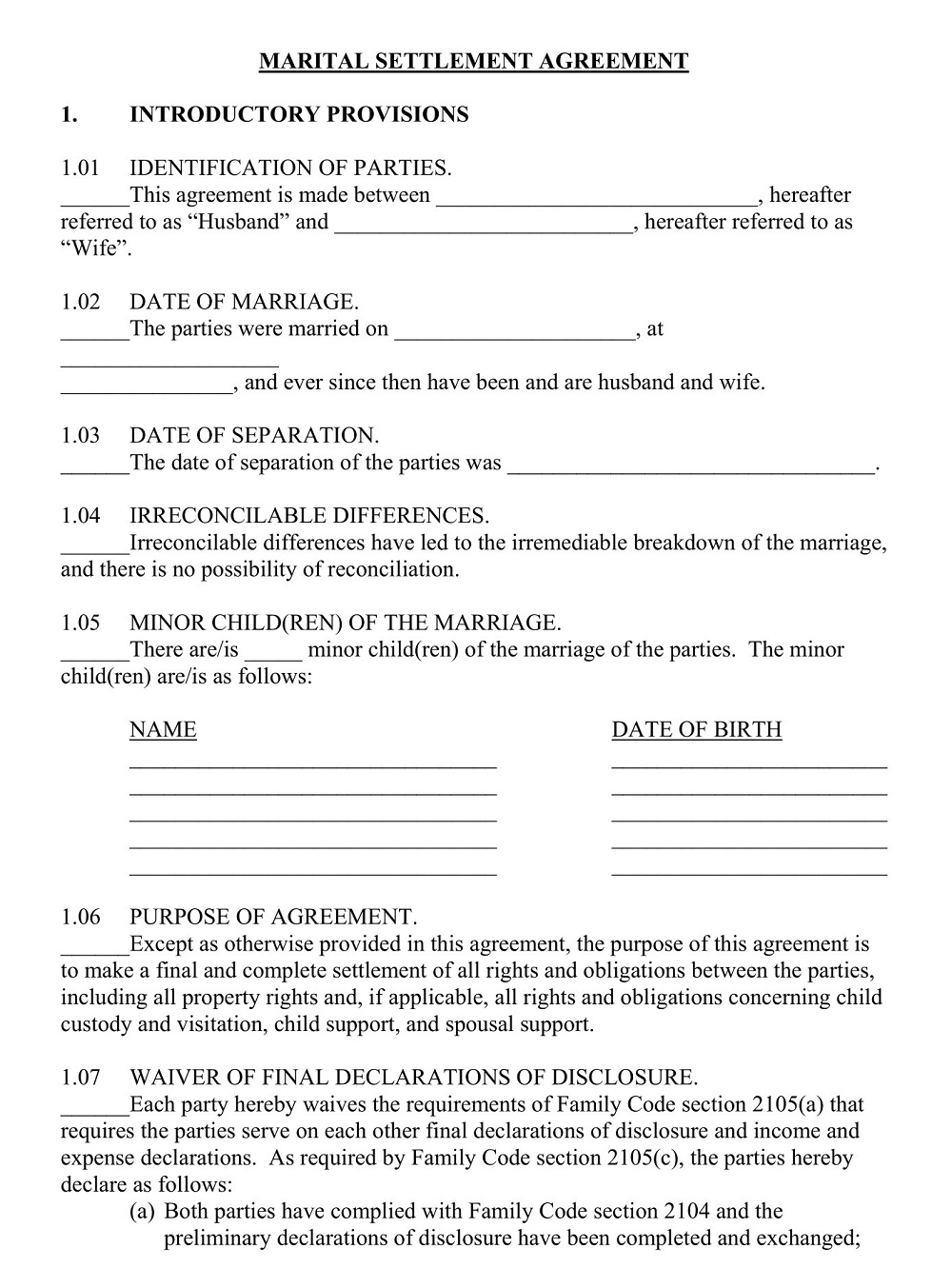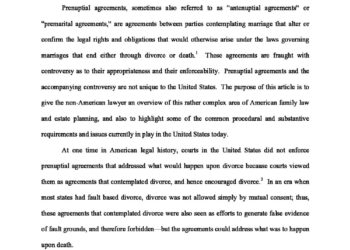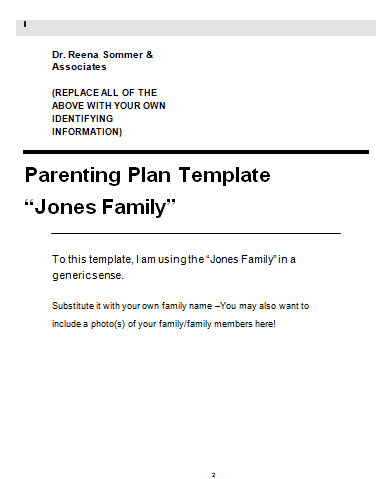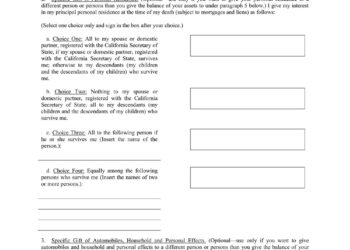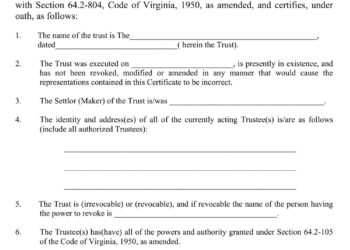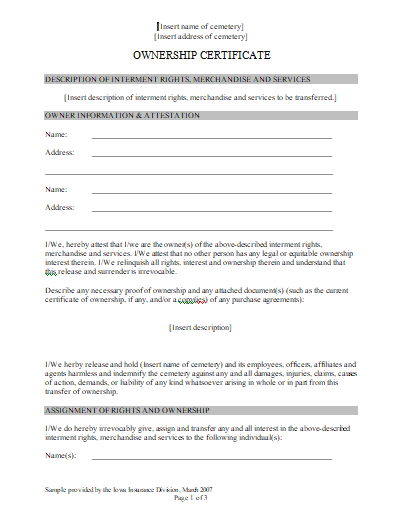Going through a divorce is never easy, but having a divorce settlement agreement template on hand can make the process a bit smoother. These templates are valuable resources that can help couples navigate through the division of assets, liabilities, child custody, and other critical aspects of their separation. Download free sample divorce settlement agreement templates to make this process easier.
A settlement agreement is an important legal document that outlines how assets, debts, and other matters will be divided between two spouses who are ending their marriage. These templates are easy to customize and allow couples to make changes to fit their needs and come to a mutually agreed-upon solution. In this article, you’ll find a collection of free Printable Divorce Settlement Agreement Templates and samples in PDF, Word, and Excel format that help you to make your settlement easier.
As you navigate the complexities of a divorce with our comprehensive “Divorce Settlement Agreements,” it’s essential to prioritize the well-being of your children. Explore our thoughtful “Parenting Plan Templates” designed to facilitate healthy co-parenting and support the emotional needs of your kids. Together, they create a compassionate and structured approach, ensuring that your children’s welfare remains at the heart of your divorce settlement.
Download Free Sample Divorce Settlement Agreement Templates
Amicable Divorce Settlement Agreement
|
Basic Marital Settlement Agreement
|
Child Custody Divorce Agreement Template
|
Civil Partner Divorce Agreement Template
|
Deed Of Settlement For Marriage Divorce
|
Dissolution Sample Marital Settlement Agreement
|
Divorce Application Form Template
|
Divorce Settlement Agreement Form Sample
|
Divorce Settlement Agreement Georgia
|
Divorce Settlement Agreement Printable
|
Divorce Settlement Agreement Provisions
|
Divorce Settlement Agreement South African Court
|
Divorce Settlement Agreement South Dakota
|
Divorce Settlement Memorandum Template
|
Marital Property Settlement Agreement
|
Marital Settlement Agreeement Template
|
Marital Settlement Agreement Provisions
|
Marital Settlement Agreement Template PDF
|
Marital Settlement Order with Minor Children
|
Model Marital Settlement Agreement
|
Pro se Divorce Suits Agreement Template
|
Property Settlement Agreement for Divorce
|
Sample Divorce Settlement Agreement
|
Sample Marital Settlement Agreement
|
Simple Divorce Settlement Agreement
|
Uncontested Divorce Settlement Agreement
|
What is a Divorce Settlement Agreement?
A divorce settlement agreement, also known as a marital settlement agreement or divorce decree, is a legally binding document that outlines the terms and conditions agreed upon by divorcing spouses regarding the division of assets, liabilities, child custody, support, alimony, and other important aspects of their separation. It serves as a comprehensive agreement that both parties voluntarily enter into to resolve issues related to their divorce. The purpose of a divorce settlement agreement is to establish clear guidelines and responsibilities for each party, ensuring a fair and mutually acceptable resolution approved by a judge to have legal standing. It provides a framework for the division of marital property and debts, including real estate, financial accounts, investments, vehicles, and personal belongings.
Benefits of Divorce Settlement Agreement
Divorce can be a challenging journey for everyone involved. Both parties go through strenuous emotional turmoil and financial struggles. However, settling a divorce through a divorce settlement agreement can make the process a little smoother. It is one of the most straightforward methods to come to a consensus with the other party over child custody, property division, and financial support. A divorce settlement agreement holds significant importance in the divorce process for several reasons:
- Clarity and Avoidance of Conflict: One of the primary reasons a divorce settlement agreement is important is that it brings clarity and helps prevent future conflicts. The agreement outlines the terms and conditions agreed upon by both parties, leaving little room for ambiguity or misunderstandings. Having clear guidelines for asset division, child custody, support, and other matters minimizes the potential for disagreements and disputes down the road. A well-drafted agreement helps reduce the uncertainty and complexity of the divorce process and ensures that both parties are on the same page about how to divide their assets and liabilities.
- Preservation of Relationships: A divorce settlement agreement can contribute to maintaining or improving the relationship between divorcing spouses, especially when children are involved. By reaching mutual agreements on matters like co-parenting, visitation schedules, and child support, it establishes a framework for cooperative parenting and fosters a healthier post-divorce relationship. This can benefit the emotional well-being of the children and provide a more stable environment for their upbringing. Moreover, it can bring peace of mind to both parties and prevent future disputes and legal battles. I
- Empowerment and Control: By participating in the negotiation and creation of a settlement agreement, both parties have a sense of empowerment and maintain control over the outcome of their divorce. This collaborative approach allows them to make decisions that align with their individual circumstances and preferences, rather than relying on a judge to make determinations on their behalf. It can lead to a greater sense of satisfaction and ownership over the process.
- Cost-Effectiveness: Resolving divorce matters through a settlement agreement is often more cost-effective compared to litigating in court. Avoiding protracted legal battles and multiple court appearances can save substantial financial resources. The cost savings can be especially valuable in the long run, as divorcing couples can allocate those funds toward rebuilding their lives and supporting their children’s well-being.
- Efficiency and Timeliness: A divorce settlement agreement promotes efficiency and timeliness in the divorce process. Negotiating and reaching agreements outside of court can expedite the resolution, allowing both parties to move forward with their lives sooner. This efficiency is particularly beneficial when there is a need to establish financial arrangements, finalize property division, and address child custody and support matters promptly.
- Compliance and Enforceability: Once approved by a court, a divorce settlement agreement becomes a legally binding document. This provides a level of assurance and enforceability for both parties. If one party fails to fulfill the obligations outlined in the agreement, the other party can seek legal remedies to enforce compliance. Having a formalized agreement encourages adherence to the agreed-upon terms and provides a mechanism for addressing violations. In short, a divorce settlement agreement is an essential tool that ensures divorcing couples a fair and harmonious dissolution of their marriage.
Overall, a divorce settlement agreement is important because it promotes clarity, that reduces conflict, and ensures compliance. It provides a framework for fair and practical resolutions that enable both parties to move forward with their lives in a more amicable and structured manner.
How to Create a Divorce Settlement Agreement Template
Going through a divorce can be an overwhelming process, but creating a divorce settlement agreement can make it easier. This agreement can help both parties avoid lengthy court battles and can help ensure that both parties receive what they need from the divorce. In addition, a divorce settlement agreement can help speed up the process and make it more efficient. When using templates to write a divorce agreement, follow these steps to customize the template according to your specific needs:
- Select a Suitable Template: In our collection. you can look for a divorce agreement template that aligns with your jurisdiction’s laws and regulations. Ensure the template covers essential components such as asset division, child custody, child support, spousal support, and any other relevant issues.
- Introduction and Identification:
- Begin by stating that both parties voluntarily enter into the agreement to resolve their divorce.
- Include the full names of both spouses, their addresses, and the date of the agreement.
- Background Information:
- Provide a brief overview of the marriage, mentioning the date of marriage, the date of separation, and any previous legal proceedings related to the divorce.
- Asset Division:
- Identify marital assets and debts: List all assets and debts accumulated during the marriage, including real estate, vehicles, financial accounts, investments, loans, and liabilities.
- Determine division: Specify how assets and debts will be divided between the parties. Clearly outline who will assume responsibility for each debt and how the value of assets will be allocated.
- Child Custody and Visitation:
- Establish custody arrangement: Define the agreed-upon custody arrangement, including legal custody (decision-making authority) and physical custody (residential schedule).
- Determine visitation schedules: Detail the visitation or parenting time schedule, outlining specific days, holidays, vacations, and any other relevant considerations.
- Address decision-making: Specify how major decisions regarding the children’s education, healthcare, religion, and extracurricular activities will be made.
- Child Support:
- Outline child support obligations: Clearly state the amount of child support to be paid, the frequency of payments (e.g., monthly), and the preferred method of payment.
- Include any provisions for adjustments in child support due to changes in income, additional expenses, or other relevant factors.
- Spousal Support (if applicable):
- Determine spousal support: Outline the terms of spousal support, including the amount, duration, and frequency of payments. Specify any conditions or circumstances that may modify or terminate spousal support.
- Legal Considerations:
- Acknowledge legal representation: If both parties have sought legal advice, include a statement confirming that they have had the opportunity to consult with their own attorneys.
- Governing Jurisdiction: Specify the jurisdiction and laws that govern the agreement.
- Signatures and Notarization:
- Provide space for both parties to sign and date the agreement.
- Consider having the signatures notarized or witnessed to enhance the document’s legal validity.
Tips for Writing an Effective Divorce Settlement Agreement
Writing an effective divorce settlement agreement requires careful consideration and attention to detail. Here are some tips to help you create an impactful and comprehensive agreement:
- Seek legal advice to ensure compliance with the law.
- Address all key issues such as asset division, child custody, and support.
- Use clear and specific language to avoid ambiguity.
- Provide detailed financial information, including assets, debts, and expenses.
- Include provisions for future contingencies and changes.
- Prioritize the best interests of children in custody and support arrangements.
Legal Requirements for Divorce Settlement Agreement
Going through a divorce can be a trying and complicated time for everyone involved. One essential step of the process is creating a divorce settlement agreement, which outlines the division of assets, custody arrangements, and other critical decisions between you and your soon-to-be former spouse. But the legal requirements behind a divorce settlement agreement can be complex. Here are some legal requirements to ensure your agreement holds up.
- The agreement must meet state law requirements – The most crucial legal requirement for a divorce settlement agreement is that it needs to be valid under your state’s laws. Each state has its own legal requirements. For example, in some states, the settlement agreement must be in writing, and both spouses must sign it. In others, the agreement can be verbal, but it must be presented in court. You should research your state’s laws or consult a family law attorney to ensure that your agreement meets state law requirements.
- Both parties must provide full disclosure – Both parties in a divorce settlement must provide each other with complete, full, and accurate financial disclosure. This type of transparency can help avoid misunderstandings or inequalities in the settlement. Full disclosure includes every asset and debt acquired during the marriage, including personal property, real estate, and investments.
- The agreement must be fair and equitable – A divorce settlement must be reasonable and fair to both parties. A judge will review your agreement and may reject it if it determines the conditions are one-sided or constructed through coercion.
- Terms must be in the best interests of any child involved – When children are involved in a divorce, the settlement agreement must prioritize the children’s best interests. Issues like child custody, visitation schedules, and support payments must be fair and reasonable, keeping the child’s needs at the forefront.
- The agreement must be legally enforceable – Once approved, a divorce settlement agreement is a legally binding document. If either party violates the terms of the agreement, the other party can seek legal remedies, including contempt or enforcement proceedings. Therefore, the settlement agreement’s terms and conditions must be enforceable by law.
Conclusion
In conclusion, utilizing a divorce settlement agreement template can greatly facilitate the divorce process for couples seeking an amicable and structured resolution. By providing a framework and structure, a well-designed template helps ensure that all essential aspects of the divorce are addressed, including asset division, child custody and support, and spousal support.
Reference Link



